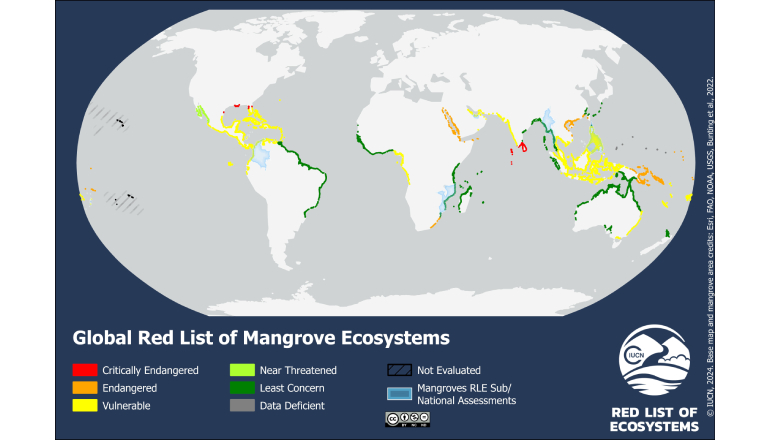Mangroves: Why They Must Be Saved?
If you think climate change impacts just human beings, think again! Over 50 percent of mangroves are on the brink of collapse, and the resultant devastation is unstoppable, unthinkable!
The IUCN’s Red List of Ecosystems has revealed that over half of the world’s mangrove ecosystems are at risk of collapse.
The assessment also predicts significant loss of life by 2050 due to climate change and sea level rise if no substantial changes are made.
Key findings:
Half of the mangrove ecosystems declared Vulnerable, Endangered, or Critically Endangered, are at risk of collapse, according to a recent research released on International Day for Biodiversity.
19.6% of mangroves indicate a high risk of collapse, with nearly 20% classified as Endangered or Critically Endangered.
Climate change threatens 33% of mangrove ecosystems, causing rising sea levels, increased storm frequency, and development, pollution, and dam construction.
Assessment:
The assessment suggests that global mangrove ecosystem maintenance is crucial for mitigating climate change impacts. That is because they can better withstand sea level rise and protect against hurricanes, typhoons, and cyclones.
• 1.8 billion tonnes of carbon stored (17% of the total current carbon stored in mangroves). This is currently valued at a minimum of $13 billion at market prices in voluntary carbon markets. It represents a cost to society equal to $336 billion based on the social cost of carbon.
• Protection for 2.1 million lives exposed to coastal flooding (14.5% of current lives exposed) and $36 billion worth in protection to properties (35.7% of current property values protected)
• 17 million days of fishing effort per year (14% of current fishing effort is supported by mangroves).
Call for action:
The study identifies key factors contributing to:
a) Mangrove degradation
b) Aiding in national assessments
c) Actions to protect and restore these ecosystems
d) guiding global commitments like the Mangrove Breakthrough which aims to secure the future of 150,000 km2 of mangroves
Preserving ecosystem integrity enhances mangroves’ resilience to climate change, reducing sea level rise issues. Preserving sediment flows and allowing mangroves to grow inland can help mitigate threats. Stakeholders can review the Red List of Ecosystems data to determine restoration options.
IUCN Heads observe:
“The first global assessment of mangrove ecosystems gives key guidance that highlights the urgent need for coordinated conservation of mangroves – crucial habitats for millions in vulnerable communities worldwide. The assessment’s findings will help us work together to restore the mangrove forests that we have lost and protect the ones we still have,” said Dr Grethel Aguilar, Director General, IUCN.
“Mangrove ecosystems are exceptional in their ability to provide essential services to people, including coastal disaster risk reduction, carbon storage and sequestration, and support for fisheries. Their loss stands to be disastrous for nature and people across the globe. The Red List of Ecosystems provides clear pathways on how we can reverse mangroves loss and protect these delicate ecosystems for the future, helping in turn to safeguard biodiversity, tackle the effects of climate change, and support the realisation of the Global Biodiversity Framework,” said Angela Andrade, Chair, Commission on Ecosystem Management, IUCN.

